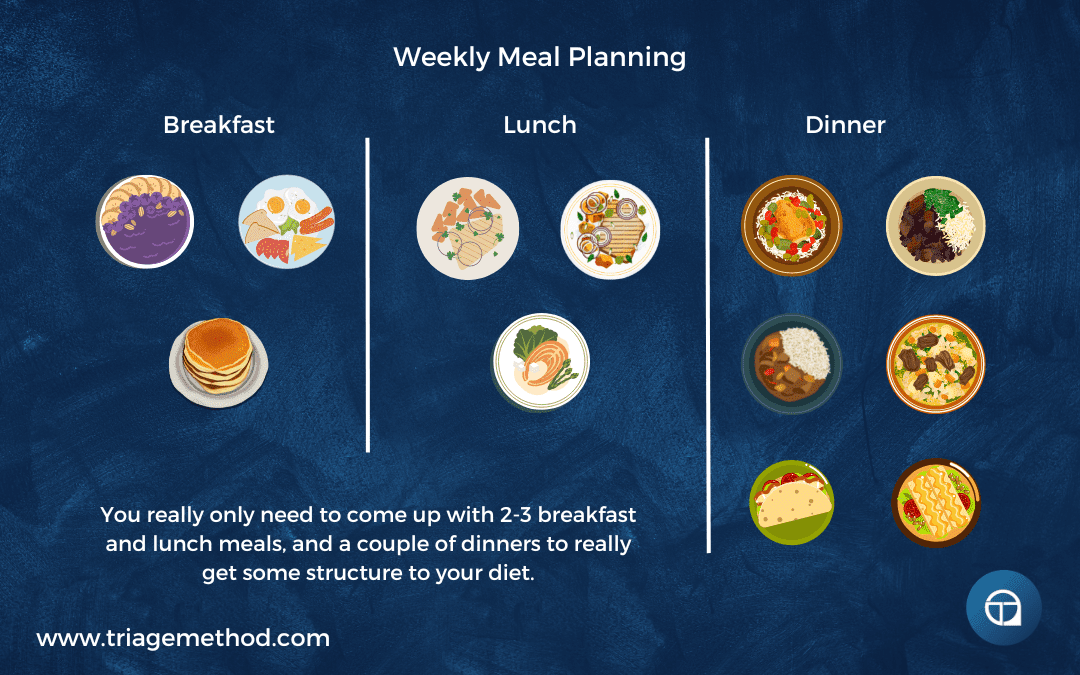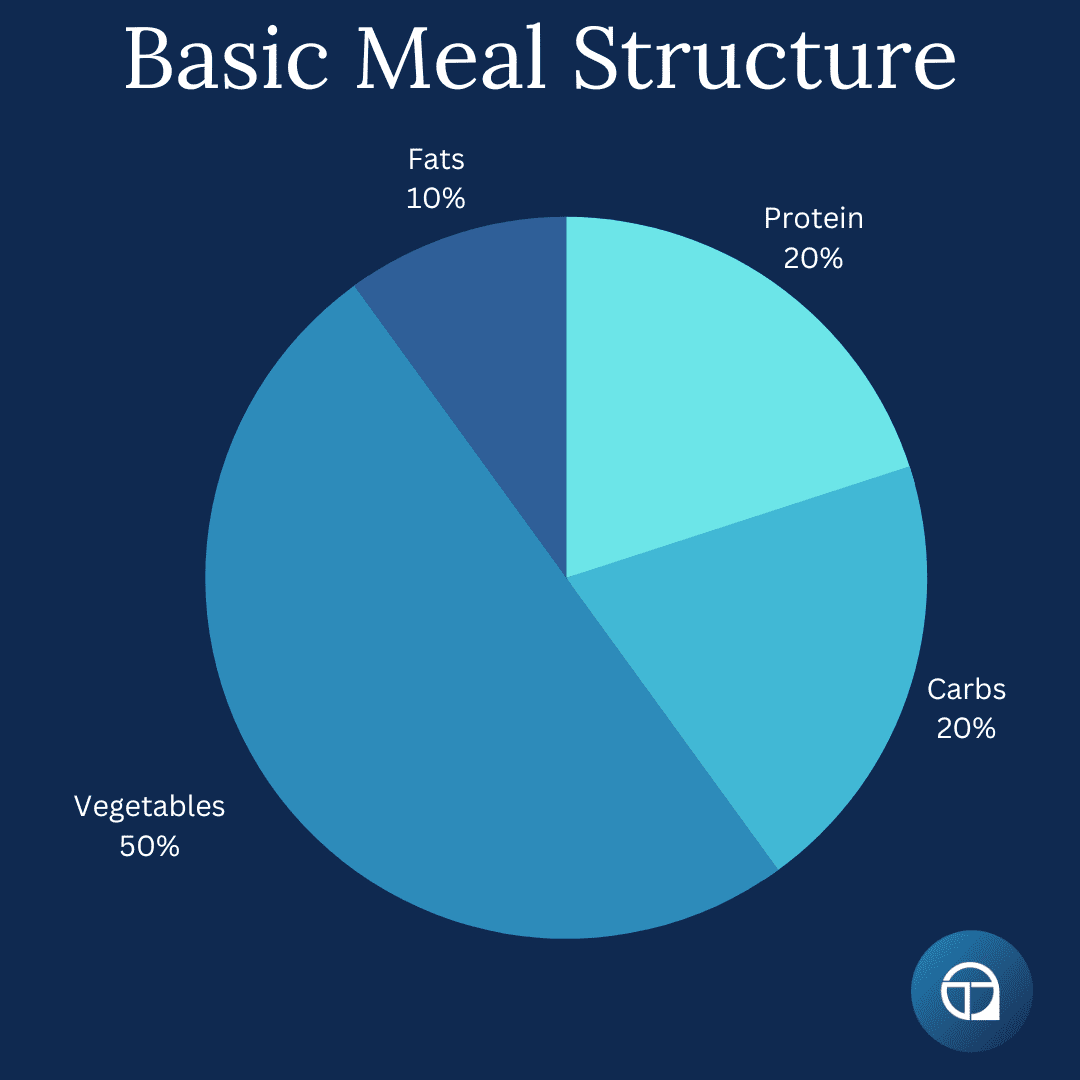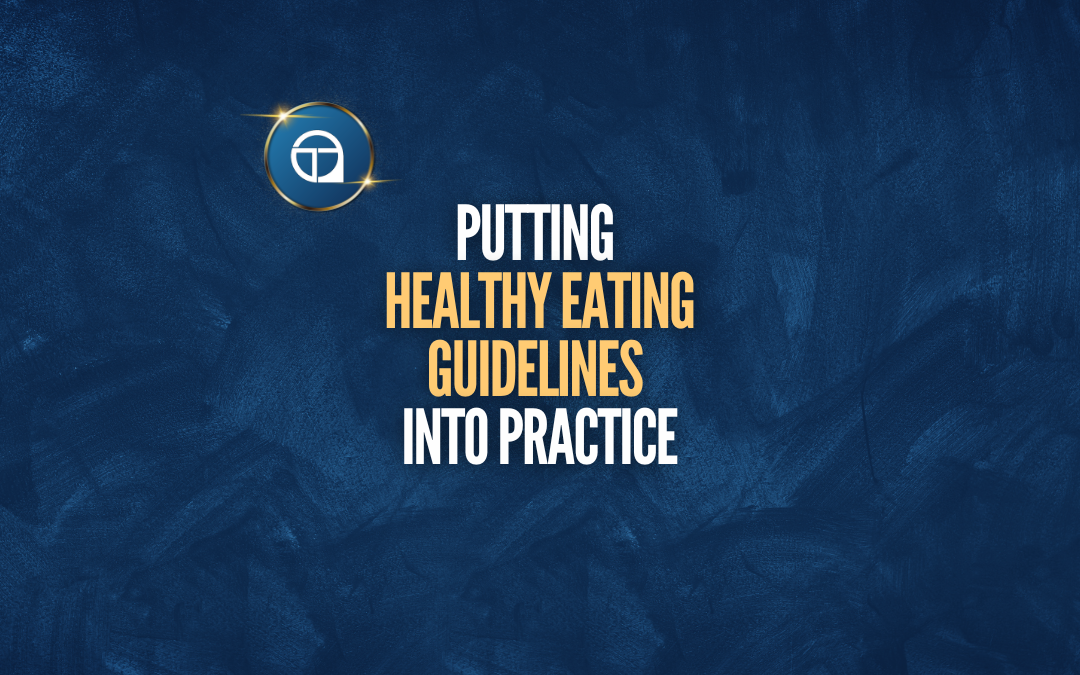In the last article on understanding diet quality, we went through some fairly basic guidelines around diet quality and some general healthy eating guidelines. So, in this article, I want to start showing you have to actually put those healthy eating guidelines into practice some sort of action plan for your diet.
But before we get stuck in, I would just like to remind you that we offer comprehensive online coaching. So if you need help with your own exercise program or nutrition, don’t hesitate to reach out. If you are a coach (or aspiring coach) and want to learn how to coach nutrition, then consider signing up to our Nutrition Coach Certification course. We do also have an exercise program design course in the works, if you are a coach who wants to learn more about effective program design and how to coach it. We do have other courses available too.
Table of Contents
Putting Healthy Eating Guidelines Into Practice
While the healthy eating guidelines outlined in the last article are generally quite robust, they aren’t actually all that easy to implement in your daily life.
This is both because dietary change is just hard (as there are so many barriers and potential reasons that steer you off track), but also because most people don’t generally think of the broader picture when making food choices on a day-to-day basis.
So, what this article aims to do is give you some idea as to how to can organise your diet on a smaller scale and actually put the healthy eating guidelines into practice.
In my experience, if you can create some sort of framework for your weekly food intake and some sort of structure for your daily meals, you drastically increase the quality of the diet on average.
Basically, if you have a plan and structure, you are more likely to follow the plan and structure and thus eat a generally healthy diet and accomplish your goals.
If you have no plan or structure, and you just have vague guidelines, you can, of course, still eat a healthful diet, but you just reduce the likelihood that you will consistently follow a healthful diet. You also actually make your diet harder because you have to constantly think about the diet.
What we ideally want to do is make following a good diet automatic.
Effectively, we want to automate the process so that you don’t have to think too much about the diet each week, you simply follow the structure and then you get the improvements in health, body composition and performance that you desire.
We don’t want the diet to be all-consuming, we want to make it something that adds to your life, not detracts from your life.
To do this, we will initially need to create a bit more structure and rigidity, but these should be seen as training wheels rather than the end goal. Having a bit more structure will actually make things easier in the long run, even though it can actually feel a bit restrictive initially.
Putting Healthy Eating Guidelines Into Practice: Weekly
What we generally recommend for most people is that they set up some sort of plan for their week, and don’t try to just “wing it”.
While this can feel a bit less spontaneous and restrictive for some, it does help quite a bit.
As an aside, in my experience, most people view dietary spontaneity as ordering fast food from the same 2-3 fast food places each week. It isn’t spontaneous or novel if it is just your average weekly diet. It is predictable.
How do we set up some sort of structure for our week and put the generally good food guidelines into practice on a weekly basis?
Well, we can do this a number of ways, but what most people find the most productive way to do this is to plan out 2-3 breakfasts, 2-3 lunches and then a variety of dinners for the week, and then buy the ingredients ahead of time (i.e. doing a weekly shop rather than more frequent shops) and ideally prepare some of the meals ahead of time too.

While planning out your weekly meals, there are some rough guidelines you can follow to ensure you get a range of nutrients in the diet and don’t just end up eating chicken, broccoli and rice.
These guidelines are relatively vague because they aren’t meant to be incredibly restrictive or to tell you exactly what to do, they are simply meant to guide you towards a better diet structure and diet quality overall.
You don’t need to follow them all perfectly, but they can be quite helpful when mapping out a week’s worth of food.
Protein:
- At each of your planned meals, ask yourself, “where is the protein?”, as many people under-consume protein across the day with dinner being the only protein-containing meal in most diets.
- Ideally, you would eat a variety of different types of meat and different cuts of meat each week, focusing on leaner cuts of meat. So don’t just plan to eat chicken at each meal.
- For most people, aiming to eat red meat 2-3 times per week is generally a good idea. Some will potentially need to aim for less, especially if choosing high saturated fat red meat, however, some will potentially need to eat more, for example, those whose iron status is low. This generally means choosing 2 evening meals that have red meat as the protein source.
- For most people, aiming to eat fatty fish 2-3 times per week is a good idea. Some will need more, especially if they have not regularly been consuming enough omega-3s or they have an increased need for omega-3s such as during pregnancy, while others may need less (usually only those who supplement regularly with sufficient quantities of omega-3s).
- For most people consuming dairy products is also a wise idea, as it is a great source of protein and calcium (and many other nutrients) in the diet. However, this will obviously need to be culturally and biologically appropriate (i.e. in non-lactose intolerant people).
- If primarily plant-based, you will likely need to pay a bit more attention to protein as it can be quite difficult to get sufficient amounts on a plant-based diet, and you will also need to pay extra attention to food combinations so as to get a better amino acid profile.
Fruits and Vegetables:
- Eating lots of fruit, vegetables and legumes (i.e. peas, beans and pulses) is a great idea, but you simply won’t eat 5-15 servings per day unless you have a plan for achieving it. So when creating your weekly diet plan, you need to have a plan for how you are going to get 2-5 servings of fruit/veg/legumes at each (or at least most) of your meals.
- Ideally, you would also eat a variety of different colours at each meal and throughout the week. This means not just sticking to the 2-3 vegetables you marked as “ok to eat” as a child. If you don’t regularly consume fruits and veg, you will have to spend some time trying a variety of different fruits and vegetables, prepared in different ways, until you really figure out what ones you like best.
Carbohydrates:
- Ideally, most people should be eating a variety of whole grains, tubers (such as potatoes) and low GI carbohydrates as their main sources of carbohydrates. In practice, this means having 2-3 different carb sources that work for each of your main meals. There doesn’t need to be a massive amount of diversity, and some meals (like breakfast) may be something you have a staple 1-2 carb sources for, but it makes sense to have a few options for your evening meal, so you eat a greater range of nutrients across the week and also reduce dietary boredom.
- For most people, reducing the intake of refined carbohydrates, like sugar, sweets, and chocolates is a good idea, but that doesn’t mean you must NEVER include them in the diet. Some people do well with having a small amount of “fun” food every day, while others prefer to have slightly larger portions less frequently (unfortunately, large portions consumed frequently don’t work for most people). Understand which one you are, and plan accordingly. Planning to include some “fun” foods in the diet is something that most people don’t do, and it usually leads to excessive cravings and feelings of excessive dietary restriction. Don’t get me wrong, some people don’t want/need to include this stuff in the diet, or they may only include it very infrequently, but having a plan for this stuff, that respects your unique needs, can really help. This is especially the case during the transitionary phase from eating a poorer quality diet to a higher quality diet.
Fats:
- For most people, eating different fat sources throughout the week, with a focus on monounsaturated and polyunsaturated fats is generally a good idea. When planning out your week of food, you will have to account for the fatty content of meat and the cooking oils you are going to use for those meals. Obviously, some meats are higher in fats, such as red meat and fatty fish, so on the days you consume those, you may want to reduce your use of cooking oils (like olive oil), or fat sources at other meals. Most people, when choosing leaner protein sources, won’t have to think too much about baseline fat intake, and will only really have to worry about added fats (such as cooking oils).
- Reducing saturated fat intake is a good idea for most people, but that doesn’t mean you need to eliminate it. However, you won’t need to focus on this too much, if you are generally choosing leaner protein sources and use more plant-derived cooking oils.
Misc.:
- Consuming a variety of (low sodium) herbs and spices can add to the diet quality, and make the diet more enjoyable.
- Reducing table salt intake, or switching to a low-sodium brand can help. If table salt is to be consumed, iodised and potassium-based is generally preferred. Similarly, paying attention to salt intake from any prepackaged foods also makes sense.
- Fermented foods may be of benefit to the diet, so if you can plan to include them in the diet, wonderful, but this is not necessary.
- Organ meat consumption would also likely increase nutrient density for most people, and it is more environmentally sustainable to eat more than just the muscle meat of an animal, but some people are hesitant to eat organ meats.
- Eating out can be difficult, but it doesn’t need to be eliminated. Most restaurants care more about the way the food tastes, rather than the calorie/macro content of the meal, so when eating out, you will have to try to make better choices where you can and not just throw in the towel because it isn’t “perfect”. However, most healthful diets usually don’t frequently involve eating out multiple nights per week, so ideally, eating out (or getting takeaway) should be a low-frequency occurrence in the diet.
Putting Healthy Eating Guidelines Into Practice: Daily
Now, I do realise this is all still a bit abstract, and what really helps a lot more, is thinking about things on a meal-to-meal basis, and then pushing that out to a day-to-day basis.
We still want to create 2-3 options for each major meal and to keep our eye on the week overall, but what can really help is actually having a rough structure for your meals, and knowing how to make better choices on any given day.
This will need to be adjusted to fall in line with your unique calorie and macro targets, but for most people, most of their meals are going to look something like this:

We want roughly 50% of our plate to be vegetables, 20% to be protein, 20% to be carbohydrates, and about 10% to be healthy fats. You don’t need to have all your meals look exactly like this, but you should ideally strive to get the majority of your meals to look something similar to this (or at least follow a similar kind of structure).
The exact proportions can be tweaked, and you may want to adjust this for your specific preference at each meal. This will usually mean playing around with lower or high carbs/fats at any given meal. However, the vast majority of your meals are going to be centred around some sort of protein source, some fruit/veg, and then you layer on the carbs/fats to meet your goals (be aware that the fats may be part of the protein choice or have been added during cooking).
So having a rough idea of what a plate should look like for each of your meals, actually makes it quite easy to make a rough daily and weekly meal plan and then also adjust things when making food choices out and about in the real world.
Of course, it won’t look perfectly the same for every meal, and some meals are especially tricky, but this is just a rough template to begin with and you are going to create an individualised plan of action for yourself.
The beauty is in the simplicity of this, and that you can use this when you go out to eat, just as easily as you do when you make your own food at home. When you are out for a meal, by all means, enjoy yourself, but keep this general guide in your head and order accordingly.
If we know what our plates need to roughly look like for each of our meals during the day, then we can actually start selecting foods to hit the targets for each of those meals, and ultimately create a few meal options, and then a rough weekly meal plan.
Humans don’t eat macronutrients, we eat food, and the whole time we have been talking about macronutrients, you may have been wondering “what does that actually mean in terms of food?”, so in the next article in this series, we are going to actually start thinking about what kind of food choices we can make to help us hit our targets.
Final Thoughts On Putting Healthy Eating Guidelines Into Practice
Healthy eating guidelines can be a bit abstract at times, and I hope this article has shown you how you can actually put the healthy eating guidelines into practice. You just need a rough plan to get started, and to help you organise your diet.
I know that all of this nutrition stuff can be quite overwhelming at first, but once you get some structure in place, things do become a lot easier over time. The key is to just stay consistent with things.
If you need help with this, you can always reach out to us and get online coaching, or alternatively, you can interact with our free content.
If you want more free information on nutrition, you can follow us on Instagram, YouTube or listen to the podcast, where we discuss all the little intricacies of exercise and nutrition. You can always stay up to date with our latest content by subscribing to our newsletter.
Finally, if you want to learn how to coach nutrition, then consider our Nutrition Coach Certification course, and if you want to learn to get better at exercise program design, then consider our course on exercise program design. We do have other courses available too. If you don’t understand something, or you just need clarification, you can always reach out to us on Instagram or via email.
The previous article in this series is about Understanding Diet Quality and the next article in this series is Understanding Food Selection, if you are interested in continuing to learn about nutrition. You can also go to our nutrition hub to find more nutrition content.

